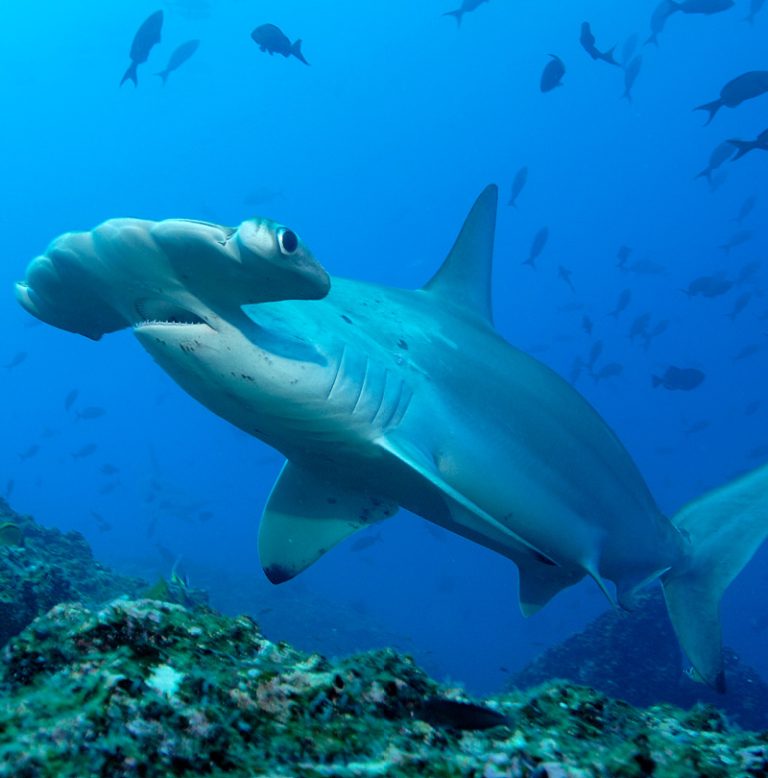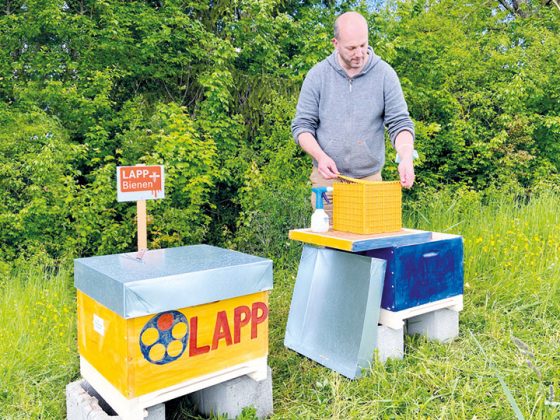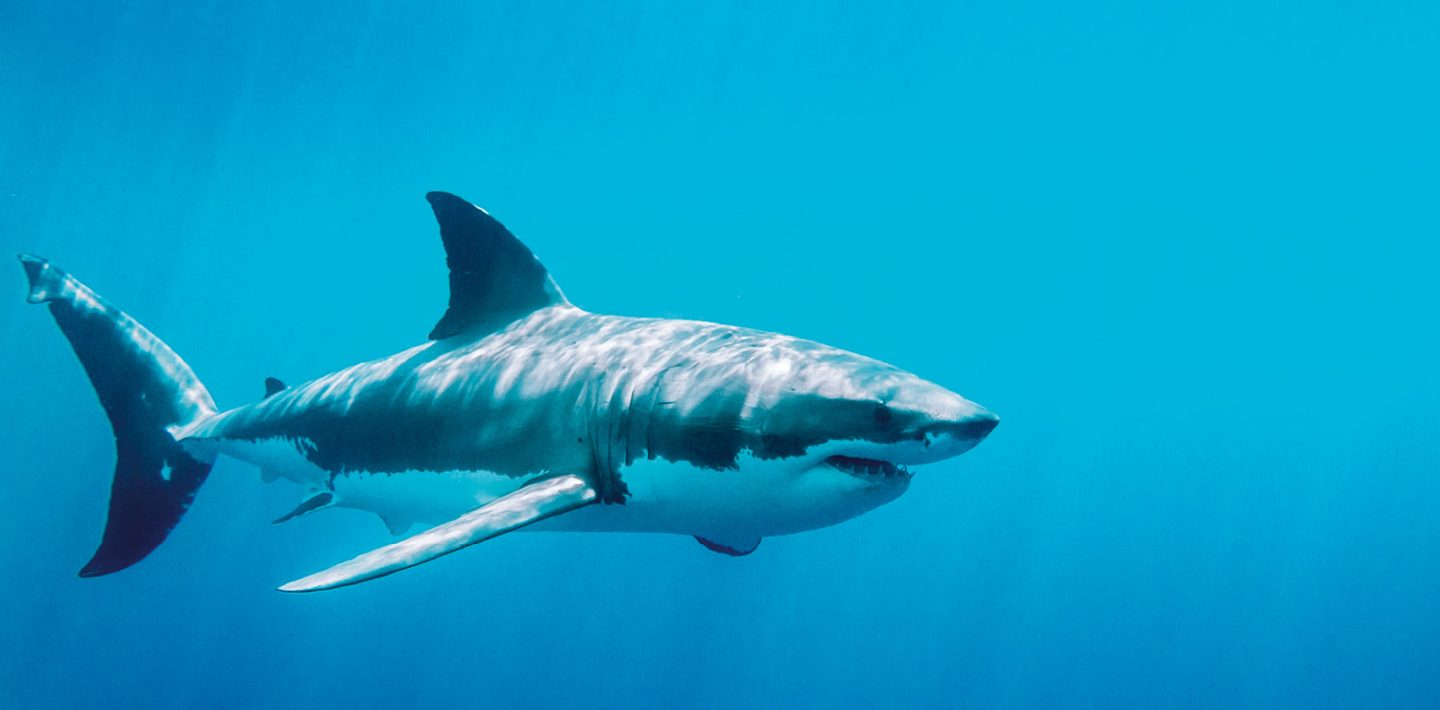
“If sharks die, the ocean dies”, says Andy Cobb, one of the most dedicated shark protectors. This was shown by a computer simulation of a coral reef entitled “Interaction strength combinations and the overfishing of a marine food web”. It included almost 250 marine species and more than 3,300 properties and behaviours, such as mating behaviour, offspring, predators, etc. The virtual reef began to live with just a click of the mouse until the researchers removed the sharks with another click. Within just one virtual year, this led to the biological death of the entire reef. So the need to protect sharks under all circumstances can be derived from this simulation. The challenge here is that we know almost nothing about the animals, except that they have a late sexual maturity and a long gestation period, which results in a high risk of death in young animals. Conversely, this means that the sharks have nothing to counter current overfishing. In short, there is a threat of extinction.
Close contact with the giants of the sea
In order to protect the animals and thus our ecosystem better, we need to find out more about them so that we can support them in their challenges and, if possible, stay out of their way. SHARKPROJECT’s research submarine was developed to give researchers the unique opportunity to “get up close and personal” with sharks – since previously, the possible contact with a shark was limited to a maximum of minutes. This is where the SHARKPROJECT expedition began. Using a specially constructed submarine, the researchers of the international shark protection initiative of the same name wanted to track the animals for a whole year and document their daily lives, for at least a few hours a day, provided that external conditions allow this.
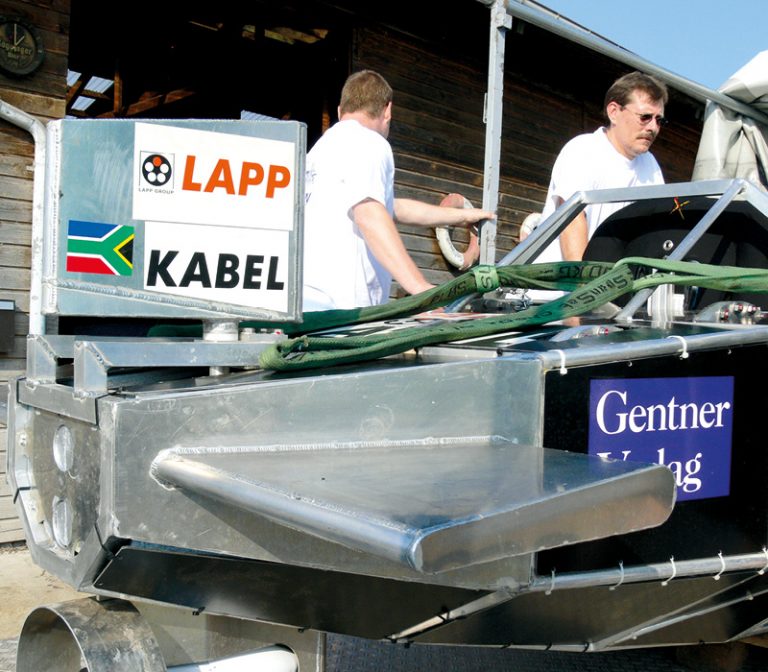

Joining forces for underwater innovation
It was a special kind of adventure: for one of a financial nature, as the high-tech submarine far exceeded the budgets of the shark-protectors. Support initiatives such as LAPP’s, the carrier organisation’s great white shark calendar or the proceeds of the new SHARKPROJECT children’s book are not long in coming. Arnold Maschinenbau took over the design and construction of the submarine. After initial animations from the Vargtimmen Media Group in Cologne, it was exhibited at the Düsseldorf trade fair Boot before being transported to the site of use in South Africa. The final assembly took place in Gansbaai. Battery packs for the drive and all controls were wired with ÖLFLEX® from LAPP.
Enthusiastic about the purpose of the project Siegbert Lapp personally travels to South Africa for the commissioning.
|
|
||
 |
The preservation of habitats on earth, on land and in the water is extremely important. At LAPP, we are committed to using resources sparingly and developing our products more sustainably. With the help of the SHARKPROJECT submarine, an important contribution is made to the preservation of biodiversity, so it is a matter of the heart for us to support it. | |
|
|
||
| Quote Siegbert Lapp |
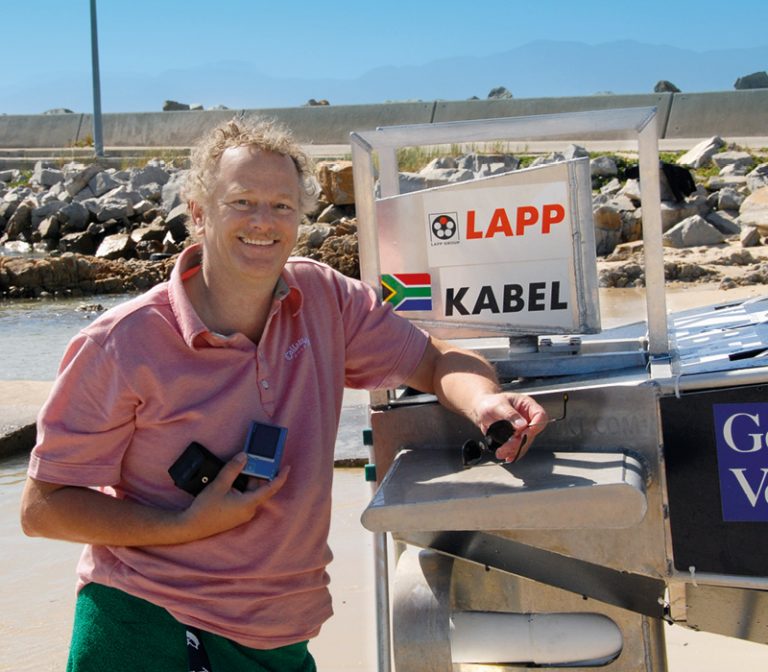

On the sharks’ heels
The project represented an unprecedented opportunity for all research participants: finally being able to accompany great white sharks on their journey underwater. The speed and reserves of compressed air allow the submarine to observe sharks over a longer period of time. Numerous research tasks have been carried out in cooperation with the SHARK RESEARCH INSTITUTE, under the scientific leadership of shark researcher Dr. Erich Ritter, who was well known during his lifetime. Scientists from several countries accompanied the expedition – and it was quite a challenge. In addition to researching underwater animals, the expedition focused on numerous circumstances and their correlations:
Reduction of the observation restriction of great white sharks
Previously, great white sharks could only be observed directly using two methods: using cage dives or from a boat on the surface of the sea. Both methods only allow limited conclusions and continue to require food to attract the animals. Indirectly, the animals could only be examined using telemetry: via submerged receivers or over longer distances using a satellite transmitter. All methods only allow a limited observation as regards time and location and provide little information on important behavioural patterns.
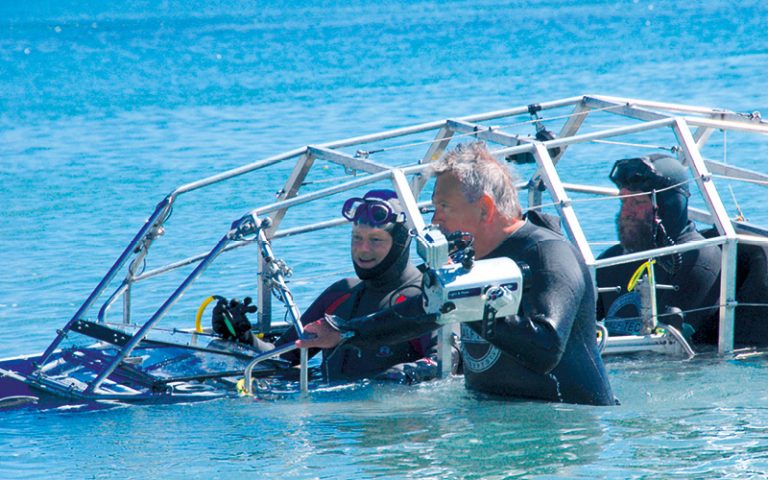
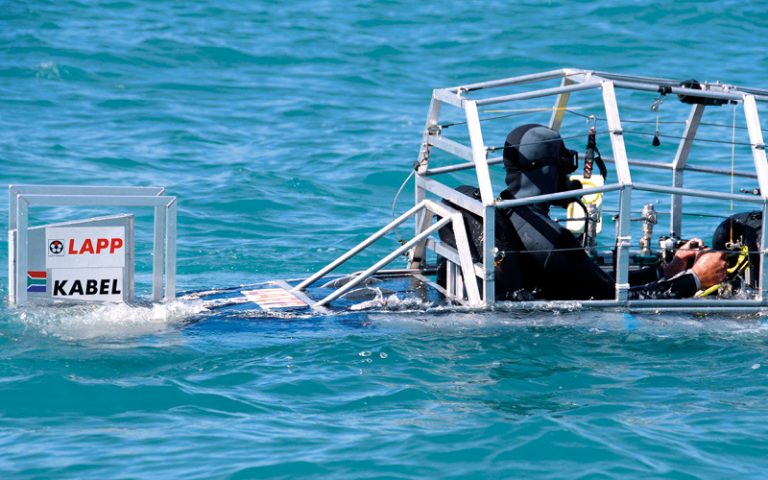
Improved research into interactions with one another
The daily life of sharks in their natural habitat and their coexistence with fellow species is almost unknown. The new submarine allows sharks to be observed live – including reproduction and birth, as well as intra-species communication. During the childbirth season, pregnant females can provide information about possible childbirth places and childbirth itself. Mating habits and copulation can be researched during the mating season – and the animals can ultimately be better protected in this fragile phase.
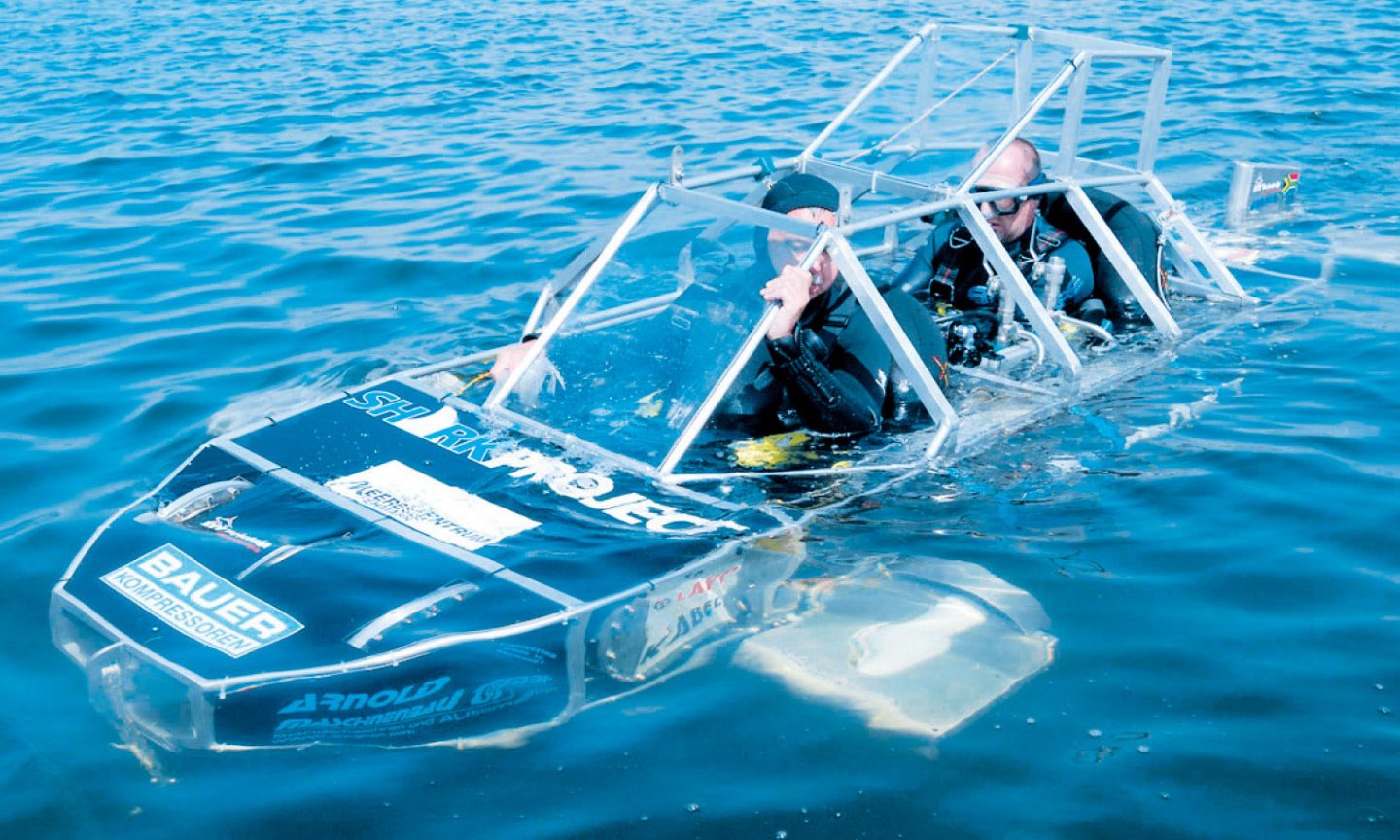
Improved research into the interactions between great white sharks and other animal species
The hunting behaviour of great white sharks is only known in fragments by how they hunt seals. However, up until now this was limited to observations above water. Staying close to seal colonies now provides insights into the aggressive behaviour of great white sharks and the defensive behaviour of seals. Young great white sharks can also be observed, who are not yet able to hunt seals and search for other food sources accordingly.
Create a better understanding of the interactions between great white sharks and humans ( surfers in particular)
Nothing is known about the occurrence of great white sharks on busy beaches, and the few encounters between sharks and surfers give no indication of the frequency of the animals’ appearances, their swimming patterns or even the timing of their occurence. By observing some popular beaches where accidents with great white sharks happened in the past, a statement about the frequency, duration of stay, time of day and behaviour of the animals in contact with humans is intended to be made possible.
Targeted observation of attack regions
It is not uncommon that great white sharks appear to be seen in the same region over an extended period of time after an accident. So far, there is no explanation for this observation. Therefore, immediately after an attack, the nearby and further surroundings should be examined and, on the one hand, keep an eye out for the animal, while on the other hand possible reasons for the animal’s sudden appearance should be recorded and any unusual circumstances recorded as well. This could help to locate and rescue the victim.
A project of sustainable significance
The research submarine spent twelve months among the great white sharks in South Africa. Countless hours of video material provided a completely new insight into their world. This helps researchers to understand them better and enables us to take their special circumstances into account. At LAPP, we focus on sustainable, environmentally friendly business and the responsible use of all natural resources, whether on land or in the sea.
|
|
||
 |
We are convinced that we as a company, and other companies as well, should make a contribution – including to valuable projects such as this. | |
|
|
||
| Quote Siegbert Lapp |
